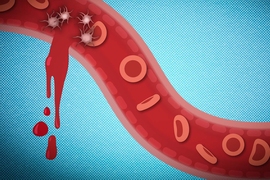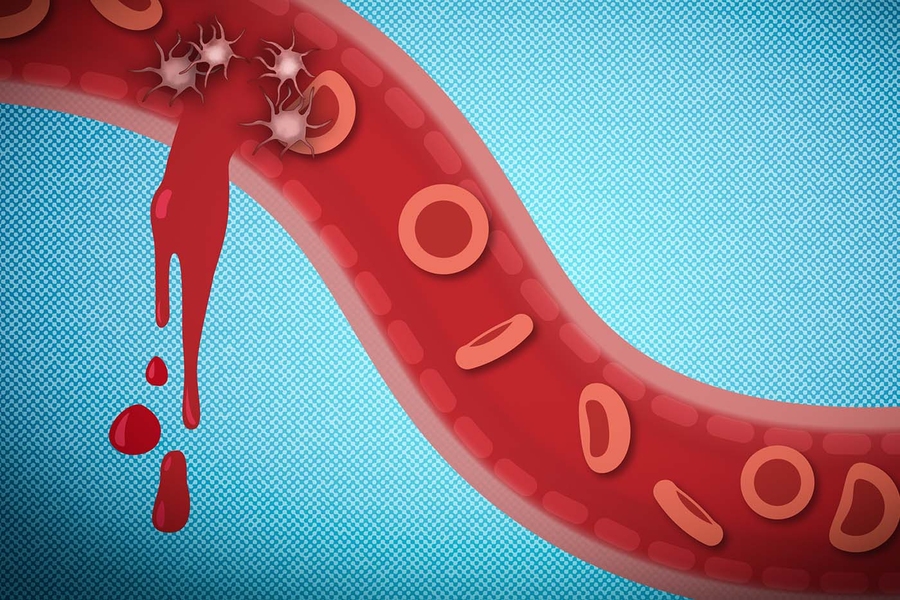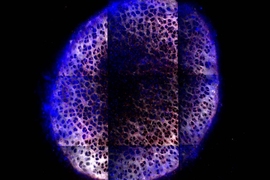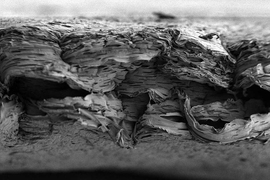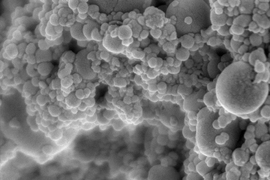Traumatic injuries are the leading cause of death in the U.S. among people 45 and under, and such injuries account for more than 3 million deaths per year worldwide. To reduce the death toll of such injuries, many researchers are working on injectable nanoparticles that can home in on the site of an internal injury and attract cells that help to stop the bleeding until the patient can reach a hospital for further treatment.
While some of these particles have shown promise in animal studies, none have been tested in human patients yet. One reason for that is a lack of information regarding the mechanism of action and potential safety of such particles. To shed more light on those factors, MIT chemical engineers have now performed the first systematic study of how different-sized polymer nanoparticles circulate in the body and interact with platelets, the cells that promote blood clotting.
In a study of rats, the researchers showed that particles in an intermediate size range, around 150 nanometers in diameter, were the most effective at stopping bleeding. These particles also were much less likely to travel to the lungs or other off-target sites, which larger particles often do.
“With nano systems, there is always some accumulation in the liver and the spleen, but we’d like more of the active system to accumulate at the wound than at these filtration sites in the body,” says Paula Hammond, an MIT Institute Professor, head of the Department of Chemical Engineering, and a member of MIT’s Koch Institute for Integrative Cancer Research.
Hammond; Bradley Olsen, the Alexander and I. Michael Kasser Professor of Chemical Engineering; and George Velmahos, a professor of surgery at Harvard Medical School and chief of trauma, emergency surgery, and surgical critical care at Massachusetts General Hospital, are the senior authors of the study.
MIT graduate student Celestine Hong is the lead author of the paper, which appears in the journal ACS Nano.
Size effects
Nanoparticles that can stop bleeding, also called hemostatic nanoparticles, can be made in a variety of ways. One of the most commonly used strategies is to create nanoparticles made of a biocompatible polymer conjugated with a protein or peptide that attracts platelets, the blood cells that initiate blood clotting.
In this study, the researchers used a polymer known as PEG-PLGA, conjugated with a peptide called GRGDS, to make their particles. Most of the previous studies of polymeric particles to stop bleeding have focused on particles ranging in size from 300 to 500 nanometers. However, few, if any studies have systematically analyzed how size affects the function of the nanoparticles.
“We were really trying to look at how the size of the nanoparticle affects its interactions with the wound, which is an area that hasn’t been explored with the polymer nanoparticles used as hemostats before,” Hong says.
Studies in animals have shown that larger nanoparticles can help to stop bleeding, but those particles also tend to accumulate in the lungs, which can cause unwanted clotting there. In the new study, the MIT team analyzed a range of nanoparticles, including small (less than 100 nanometers), intermediate (140 to 220 nanometers), and large (500 to 650 nanometers).
First, they analyzed the particles in the lab, to study how they interact with active platelets under a variety of conditions. One of their tests measured how well the particles bound to platelets as the platelets flowed through a tube. In this test, the smallest nanoparticles resulted in the greatest percentage of bound platelets. In another test, they measured how well nanoparticles could stick to a surface coated in platelets. In this scenario, the largest nanoparticles stuck the best.
Then, the researchers asked a slightly different question and analyzed how much of the mass stuck to the surface was nanoparticles and how much was platelets, because the ultimate goal is to attract as many platelets as possible. Using that benchmark, they found that the intermediate particles were the most effective.
“If you attract a bunch of nanoparticles and they end up blocking platelet binding because they clump onto each other, that is not very useful. We want platelets to come in,” Hong says. “When we did that experiment, we found that the intermediate particle size was the one that ended up with the greatest platelet content.”
Stopping the bleeding
The researchers then tested the three size classes of nanoparticles in mice. First, they injected the particles in healthy mice to study how long they would circulate in the body and where they would accumulate. They found that, as seen in prior studies, the largest particles were more likely to accumulate in the lungs or other off-target sites, and their circulation time was shorter.
Working with their collaborators at MGH, the researchers then used a rat model of internal injury to study which particles would be most effective at stopping bleeding. They found that the intermediate-sized particles appeared to work the best, and that those particles also showed the greatest accumulation rate at the wound site.
“This study suggests that the bigger nanoparticles are not necessarily the system that we want to focus on, and I think that was not clear from the previous work. Being able to turn our attention to this medium-size range can open up some new doors,” Hammond says.
The researchers now hope to test these intermediate-sized particles in larger animal models, to get more information on their safety and the most effective doses. They hope that eventually, such particles could be used as a first line of treatment to stop bleeding from traumatic injuries long enough for a patient to reach the hospital.
“These particles are meant to address preventable deaths. They’re not a cure-all for internal bleeding, but they’re meant to give a person a few extra hours until they can get to a hospital where they can receive adequate treatment,” Hong says.
The research was funded by the U.S. Army Research Office through the Institute for Soldier Nanotechnologies at MIT, and the Department of Defense.
